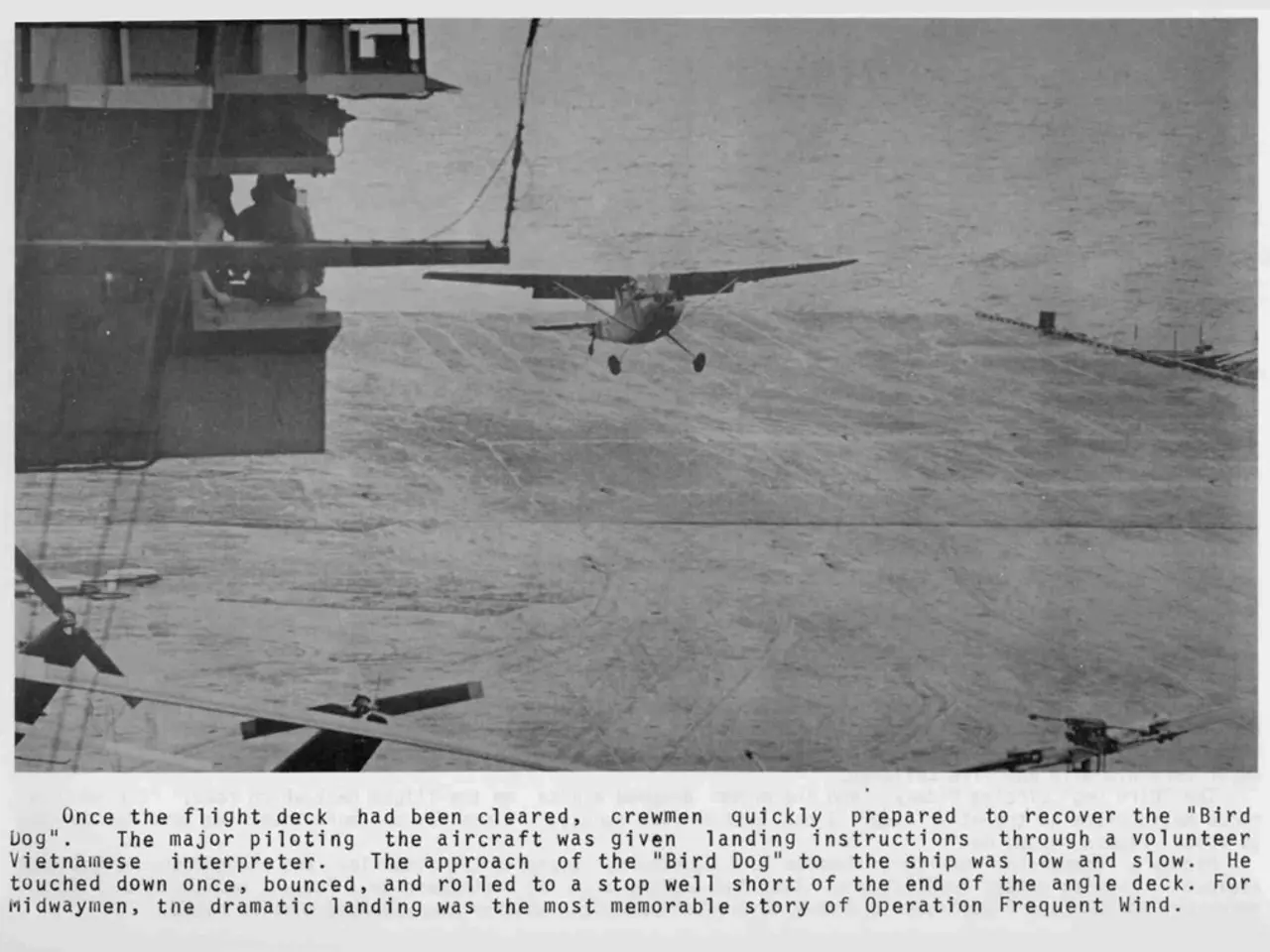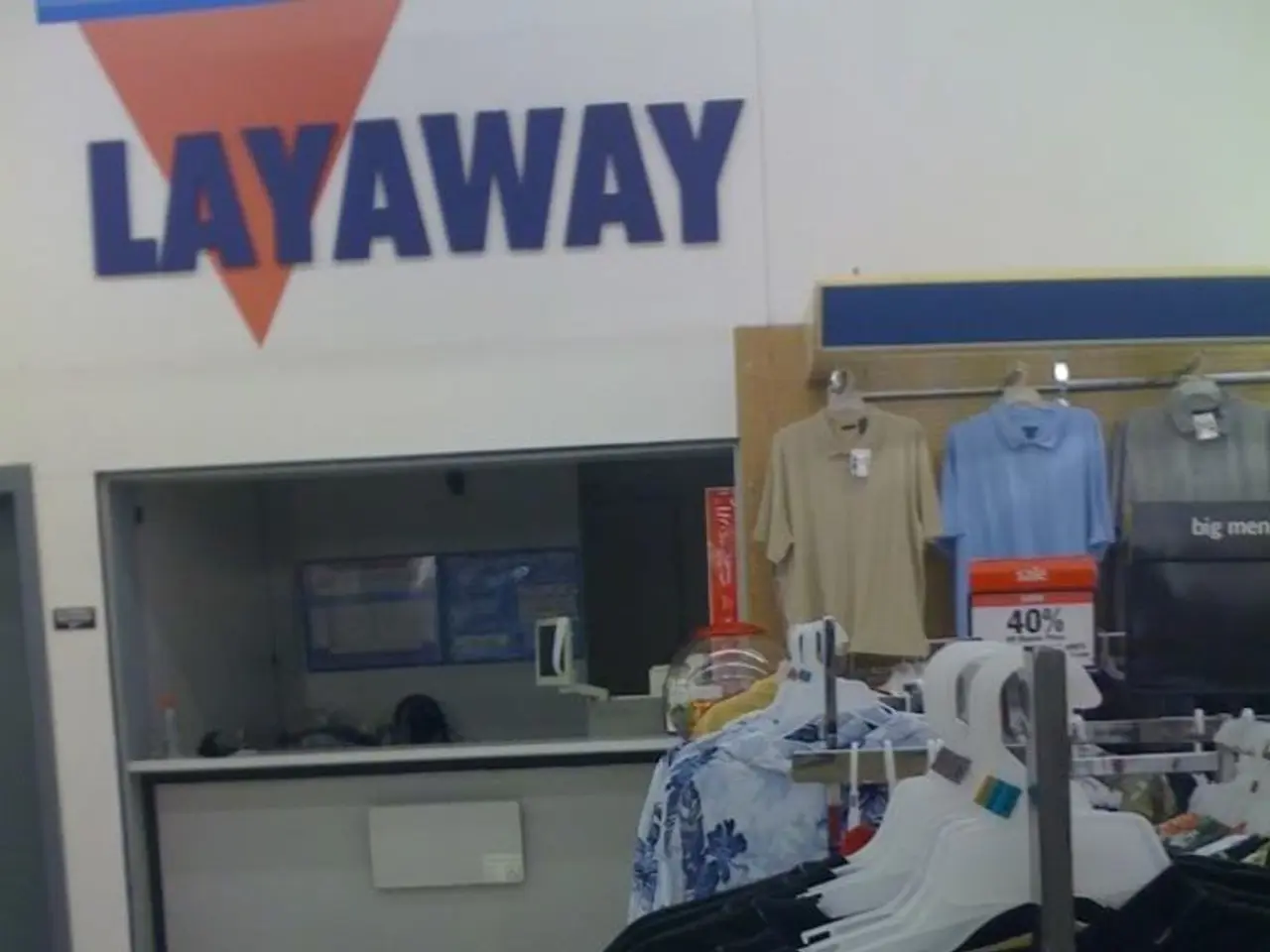Prepared for lift-off: the potential of green fuel in aviation industry.
Sustainable Aviation Fuel Market Poised for Rapid Growth
The sustainable aviation fuel (SAF) market is experiencing a surge in growth, driven by a combination of factors including environmental regulations, technological advancements, and government incentives. According to market projections, the SAF market size is expected to expand from around $0.79 billion in 2024 to approximately $5.69 billion by 2029, reflecting a very high compound annual growth rate (CAGR) of approximately 47% to 53.7% over the next five years.
The increasing demand for SAFs comes from airline companies aiming to reduce greenhouse gas emissions and meet carbon reduction targets. Expanding production technologies and diversification of feedstock are also enhancing supply chain reliability. Governments are playing a crucial role in supporting the growth of the SAF market, with strong mandates, tax credits, and policies targeting SAF adoption.
For instance, the UK SAF Mandate requires SAF use to rise from 2% in 2025 to 10% by 2030, and potentially 22% by 2040. This mandate includes tradable SAF certificates and price caps to stimulate supply and keep costs manageable. Regional initiatives like Minnesota’s SAF tax credit and Canada’s Clean Fuel Regulations provide financial incentives to SAF producers and users.
Investment opportunities in the SAF market are robust, with growing merger and acquisition activity, venture capital inflows, government-backed financing, and participation by major oil & gas companies seeking entry into the SAF space. Investors are particularly focused on businesses with scalable production, innovative feedstock, effective supply chain integration, and compliance with evolving regulations.
Leading carriers such as United Airlines, Delta, American Airlines, Air Canada, and JetBlue have committed to substantial SAF purchase agreements. For example, United has commitments for 2.9 billion gallons and will use 10 million gallons in 2025, while Delta plans for a 5% blend by 2030 through large offtake deals. These airline commitments signal growing SAF integration into regular operations and infrastructure expansion at airports.
However, it's important to note that the SAF market is still in its infancy, but opportunities for investors exist, with companies like Neste and UPM already trying to establish themselves in this market. The global jet fuel market in 2019 had a volume of 300 million tonnes, with around 20% accounted for by the European Union, which aims to replace 14% of the required aviation fuel with SAFs. The Fuel Forum of the International Air Transport Association predicts that the market will grow to 420 million tonnes by 2030.
Three alternatives to conventional kerosene are being considered for the aviation industry: hydrogen, SAFs, and electricity. While hydrogen requires a completely new infrastructure and adapted technologies, both in aircraft and at airports, SAFs can already be used in existing tanks and are made from waste materials such as used cooking oils. Estimates suggest that the aviation industry's oil consumption could rise to more than 14 million barrels per day by 2050 without political intervention.
Governments around the world are setting minimum SAF quotas to reduce the industry's carbon footprint. France has set a minimum of 1% for SAFs in aviation fuel for 2022, the US President Joe Biden is calling for a nationwide minimum of 1% of SAFs in aviation fuel, and the Netherlands is considering a minimum quota of 14% for SAFs by 2030. Sweden mandates that at least 0.5% of aviation fuel must be SAFs in 2021.
The SAF market aligns with the UN Sustainable Development Goals for sustainable transport, sustainable tourism, and sustainable consumption and production patterns, offering attractive opportunities for investors. The market's growth is fueled by global climate goals, regulatory frameworks mandating blending quotas, financial incentives, technological progress, and strong airline demand, creating a favorable environment for adoption across the aviation industry.
References:
[1] Grand View Research. (2021). Sustainable Aviation Fuel Market Size, Share & Trends Analysis Report By Type (Synthetic Paraffinic Kerosene, Fischer-Tropsch Synthesis, Hydroprocessed Esters and Fatty Acids, Algal Oil, Other Biofuels), By Application (Commercial Aviation, General Aviation, Military Aviation), And Segment Forecasts, 2021 - 2028. [online] Available at: https://www.grandviewresearch.com/industry-analysis/sustainable-aviation-fuel-market
[2] International Air Transport Association. (2021). Sustainable Aviation Fuel (SAF) and the path to net zero emissions. [online] Available at: https://www.iata.org/en/topics/sustainability/sustainable-aviation-fuel/
[3] McKinsey & Company. (2020). The sustainable aviation fuel opportunity. [online] Available at: https://www.mckinsey.com/industries/aviation/our-insights/the-sustainable-aviation-fuel-opportunity
[4] MarketsandMarkets. (2021). Sustainable Aviation Fuel Market by Type (Synthetic Paraffinic Kerosene, Fischer-Tropsch Synthesis, Hydroprocessed Esters and Fatty Acids, Algal Oil, Other Biofuels), By Application (Commercial Aviation, General Aviation, Military Aviation), and Region - Global Forecast to 2029. [online] Available at: https://www.marketsandmarkets.com/Market-Reports/sustainable-aviation-fuel-market-216681139.html
[5] PwC. (2020). Sustainable Aviation Fuel: Driving a greener recovery. [online] Available at: https://www.pwc.com/gx/en/services/sustainability/publications/sustainable-aviation-fuel.html
- The sustainability of the aviation industry is increasingly being addressed through the adoption of sustainable aviation fuels (SAFs), which have attracted attention from scientists, environmental-scientists, and investors.
- As the SAF market continues to grow at a significant rate, the finance and investing sectors are recognizing the potential in real-estate developments related to SAF production and infrastructure, such as refineries and storage facilities.
- To further combat climate-change, governments are implementing policies and mandates requiring a greater use of SAFs in aviation fuel, with Sweden, France, the Netherlands, and the US setting mandatory quotas for SAFs, aligning with the UN Sustainable Development Goals for sustainable transport and consumption.




